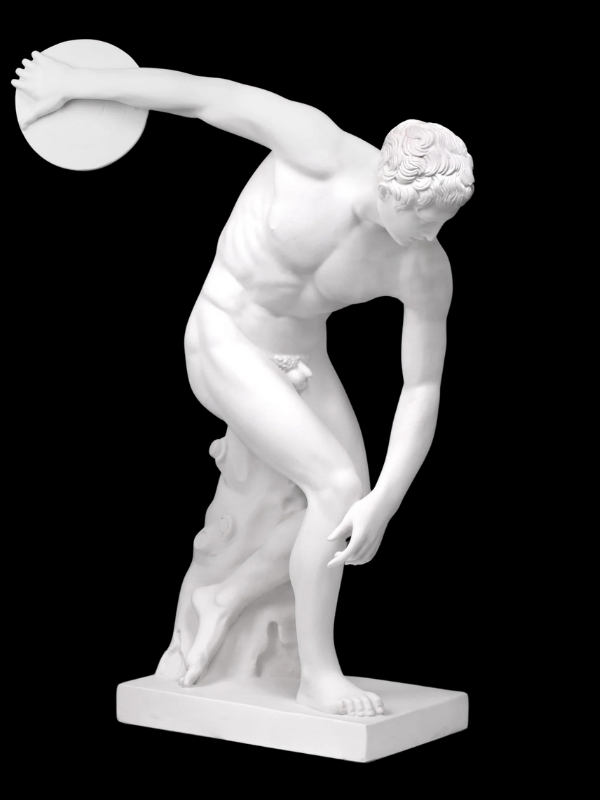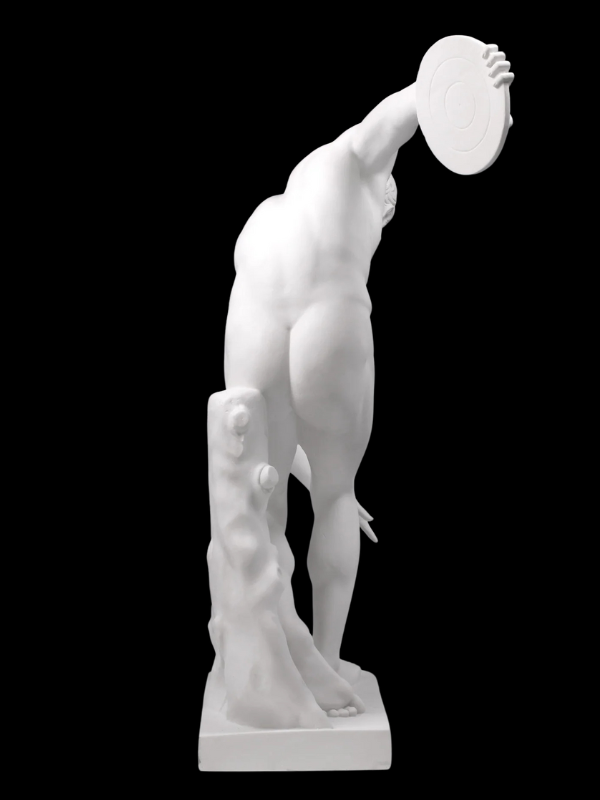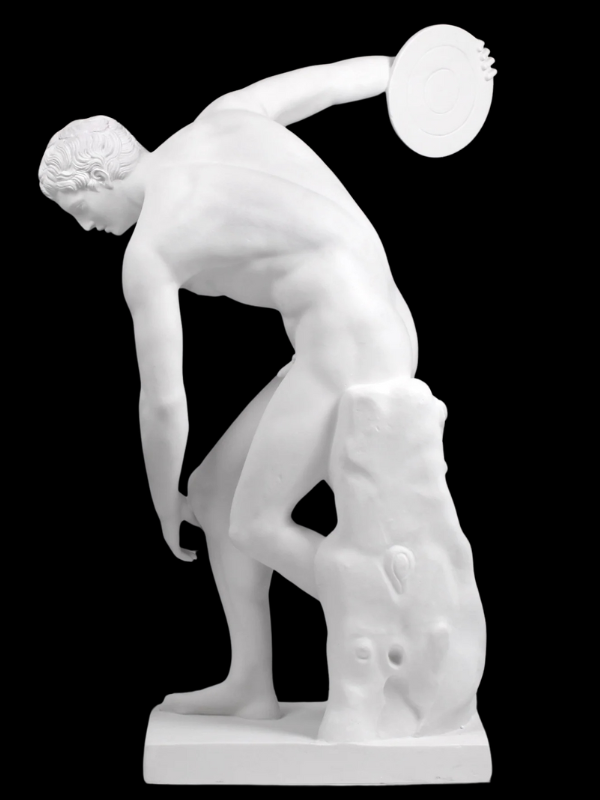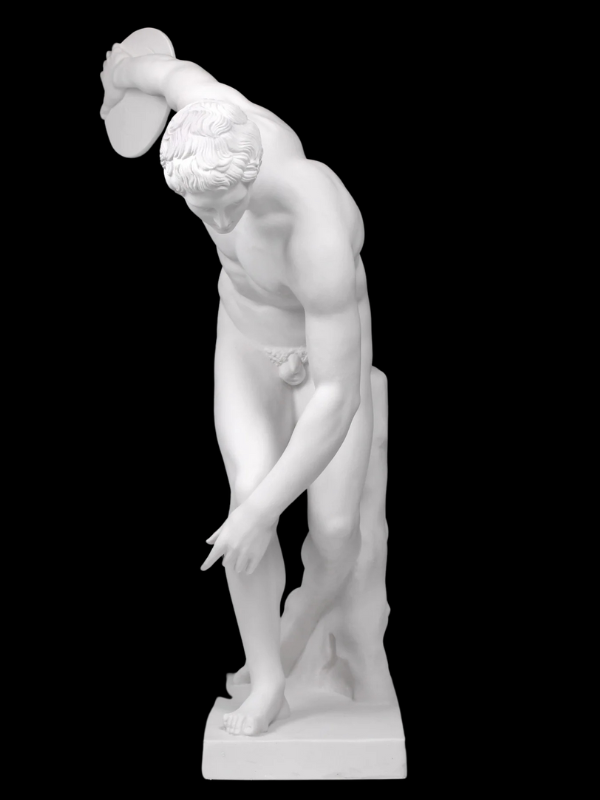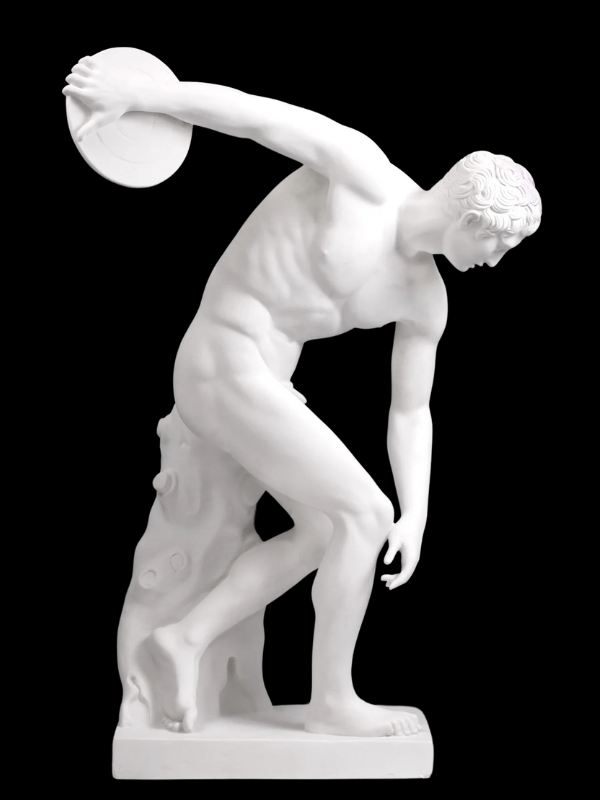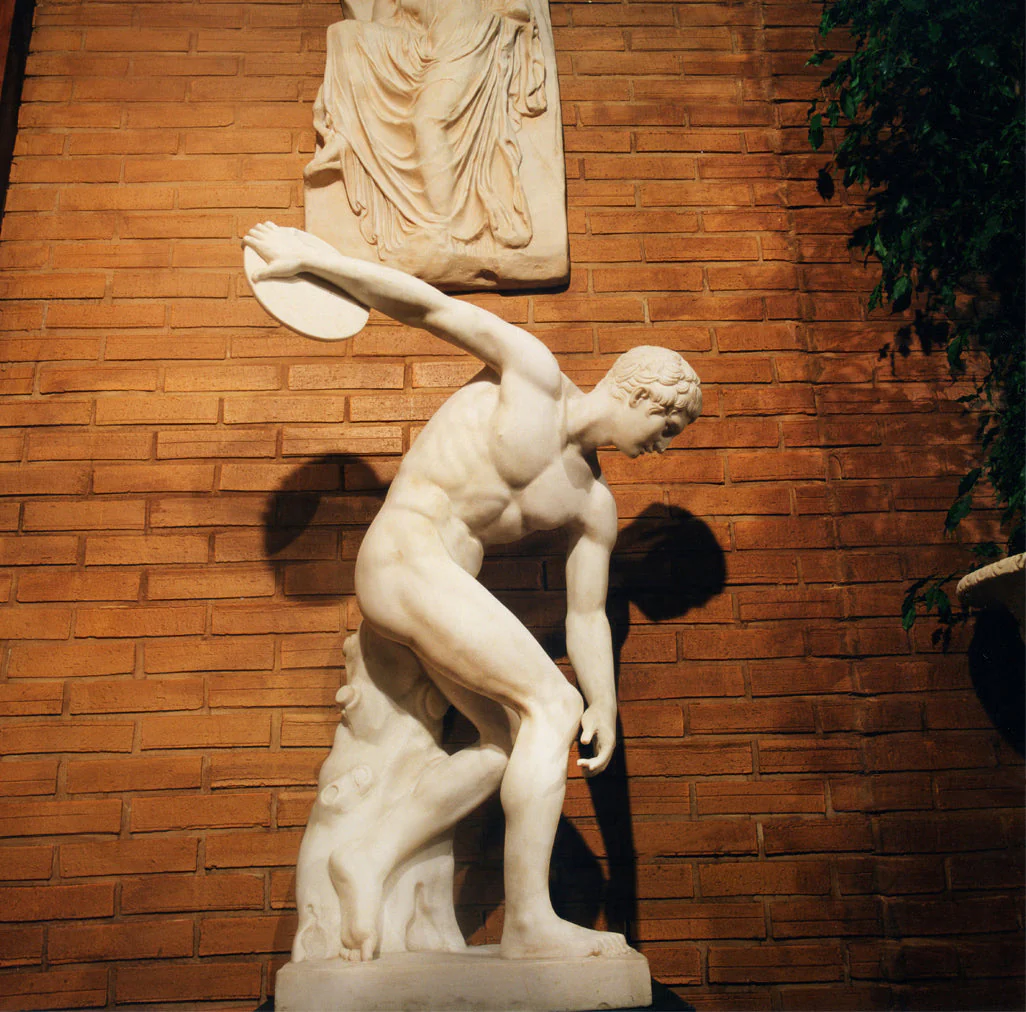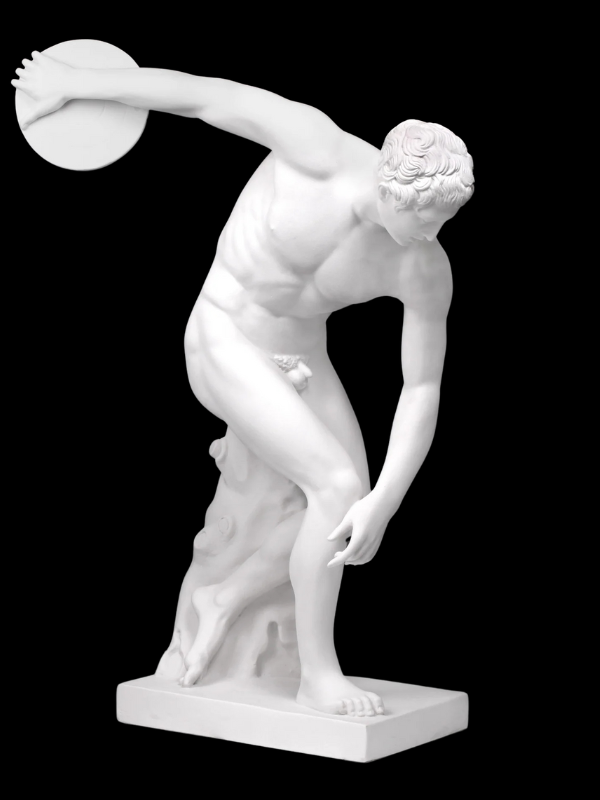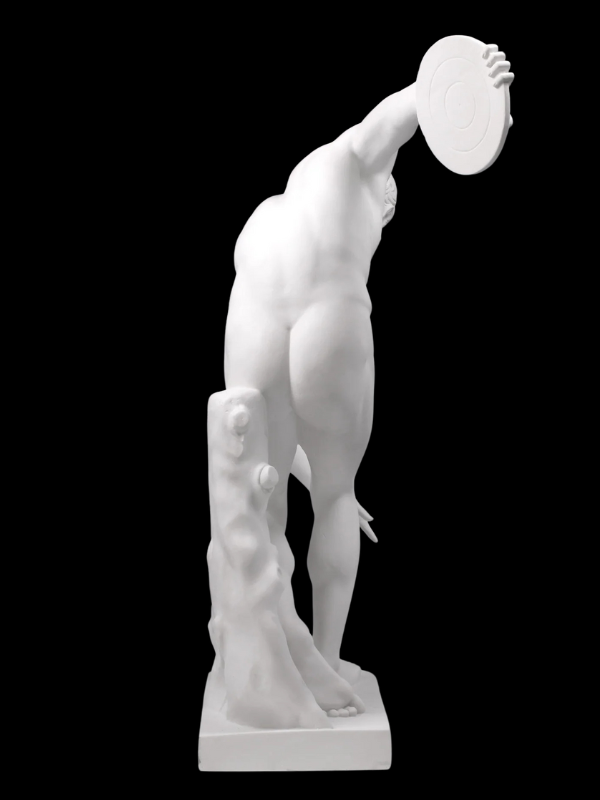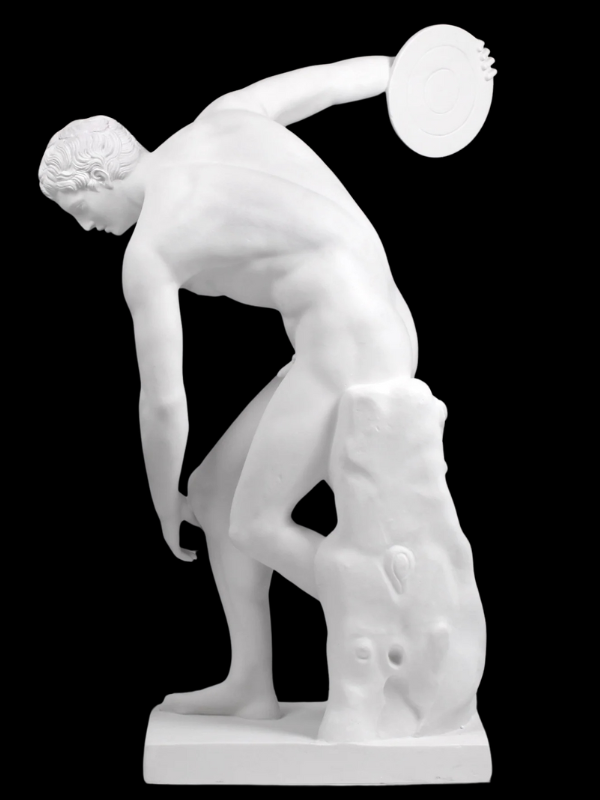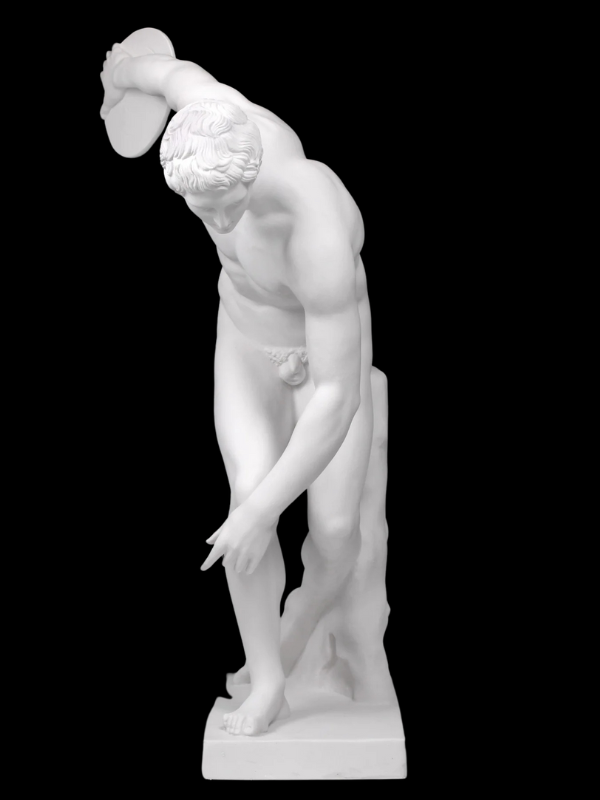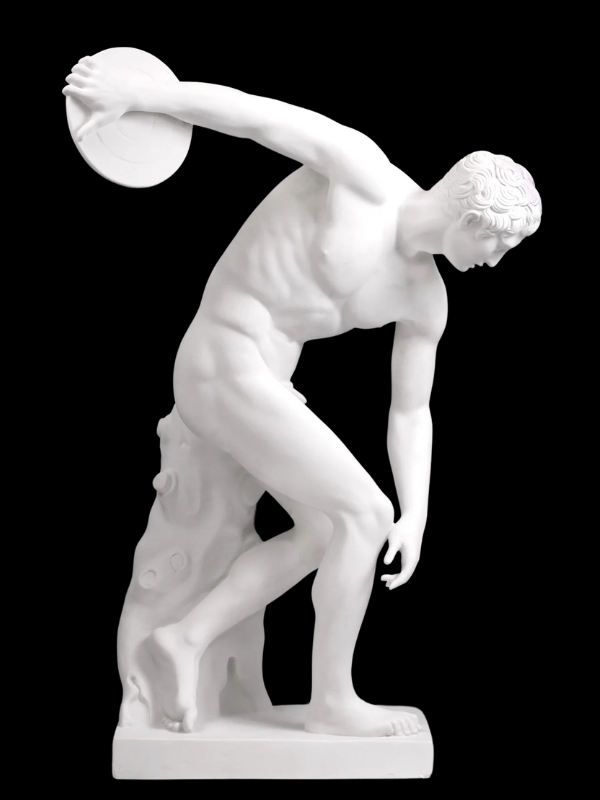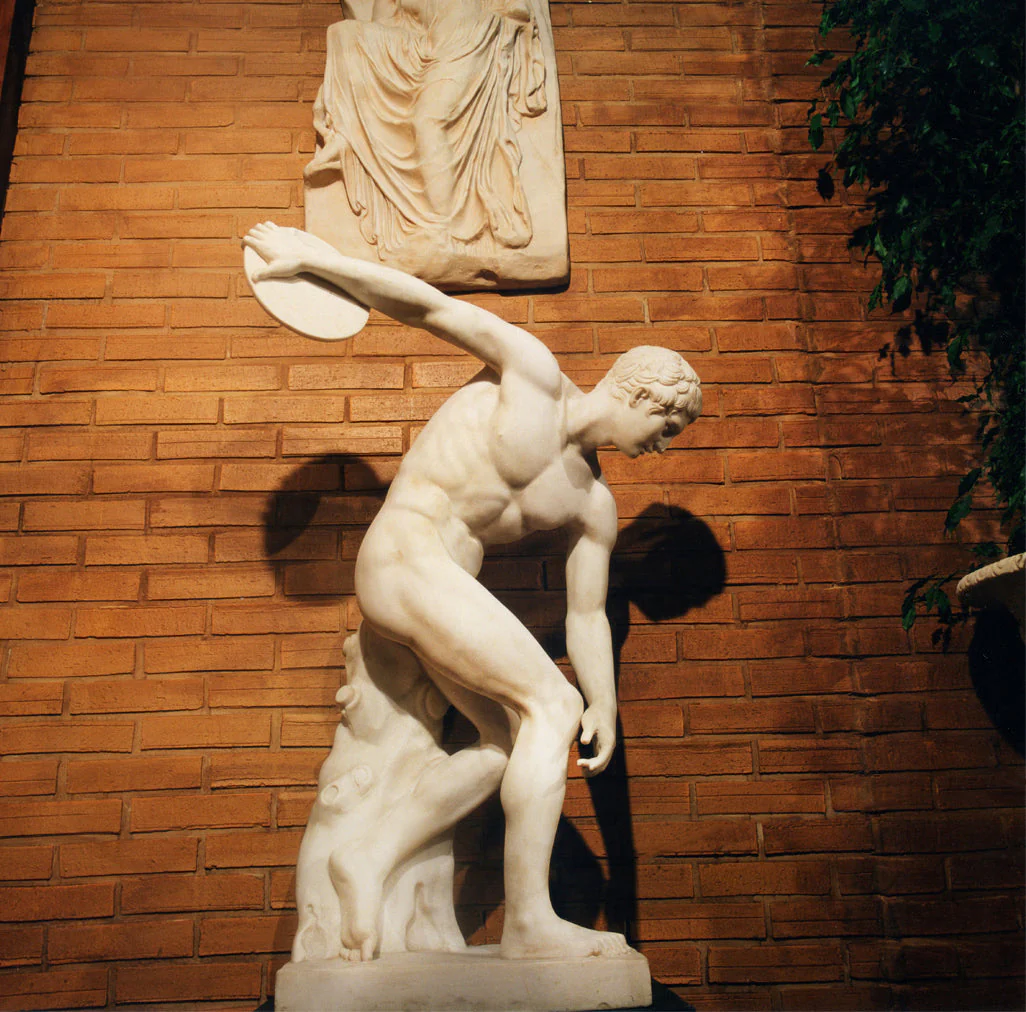Discobolus Statue
Discobolus Statue
Our Life-size Discobolus Statue, standing at 114 cm tall, is a stunning reproduction that pays homage to one of the most renowned sculptures in ancient art history. This statue is not merely a decorative piece but a window into the world of classical antiquity, capturing the grace, power, and beauty of the athletic human form as envisioned by the ancient Greeks and later celebrated by the Romans. Available for sale, this exceptional piece is modeled after the Roman copy housed in the Vatican Museums, itself a replica of the Greek original created by the celebrated sculptor Myron around 460-450 BC.
The Discobolus, or “Discus Thrower,” is one of the most iconic representations of athleticism and physical excellence, immortalizing the idealized human form in motion. It is both a marvel of artistic skill and a reflection of the cultural values of ancient Greece, where athletic competitions were not just a display of physical prowess but also a means of worshiping the gods and achieving personal glory.
History and Myth of the Discobolus
The Discobolus sculpture finds its roots in ancient Greek culture, where athletic competitions played a central role in society. In the context of ancient Greece, the Olympics and other athletic games were more than just sporting events—they were religious festivals that honored the gods, particularly Zeus, the king of the Olympian deities. Athletes who competed in these games did so with the belief that their physical feats were a form of divine worship. Winning in these competitions was seen as not only a testament to one's physical abilities but also as a demonstration of favor from the gods.
The original Discobolus by Myron was created during the height of the Classical period of ancient Greece, a time when sculptors were particularly focused on achieving an idealized version of the human form. The Greek athlete, especially in the discus thrower, was a symbol of arete, a term meaning excellence in both physical and moral virtues. Sculptors like Myron sought to depict the human body in its most perfected form, where balance, proportion, and harmony were paramount. The statue captures the exact moment when the athlete prepares to release the discus, his body coiled in a dynamic pose that emphasizes both strength and grace.
The mythological context surrounding athletics and the human body in ancient Greece is tied deeply to their religious beliefs. Many athletes were associated with the divine, either as favorites of the gods or as demigods themselves. For instance, Hercules, one of the greatest heroes in Greek mythology, was not only known for his legendary strength but also for his role as a founder of the Olympic Games. Statues like the Discobolus thus evoke a sense of the sacred in athletic competition, where the human body becomes a vessel for divine excellence.
The Artistic Significance of the Discobolus
Myron’s Discobolus stands as a testament to the artistic innovations of the Classical Greek period. Before this time, Greek sculptures often depicted figures in rigid, static poses, characteristic of the Archaic period. Myron, however, was a pioneer in capturing movement, and his Discobolus is a masterpiece of contrapposto—a technique where the figure’s weight is shifted onto one leg, giving the impression of dynamism and fluidity. In this statue, the discus thrower’s body is twisted in preparation for the throw, with his muscles taut and his limbs arranged in a beautifully balanced composition that conveys both potential energy and control.
One of the key features of the Discobolus is the way Myron manages to freeze a fleeting moment in time. The athlete is caught in the middle of action, and yet, his face remains calm and expressionless, embodying the Greek ideal of sophrosyne, or self-control. This combination of physical exertion and emotional restraint was highly valued in ancient Greek culture, reflecting the belief that true excellence was achieved through a balance of mind and body.
The original Greek statue by Myron, like most Classical Greek sculptures, was cast in bronze—a material that allowed for more dynamic poses due to its strength and flexibility. Unfortunately, few bronze originals from this period have survived, as they were often melted down for their material. The Discobolus we know today is primarily through Roman copies, which were typically carved in marble. These Roman versions, while faithful to the original in many respects, often included slight variations, such as additional supports for the legs (a necessity due to the different properties of marble) and differences in the orientation of the head.
Roman Copies and the Vatican Discobolus
The Roman admiration for Greek art led to the widespread production of marble copies of famous Greek sculptures. The Discobolus was no exception, and several versions of this statue have been found, each with slight variations. One of the most famous Roman copies is housed in the Vatican Museums, and it is this version that serves as the model for our life-size reproduction.
The Vatican Discobolus, like other Roman copies, features a marble support running along the legs to provide additional stability, a feature not present in the original bronze version. Additionally, some Roman copies show the athlete’s head turned in a different direction—either to the left or right—depending on the sculptor’s interpretation. These small differences highlight the Roman desire to honor Greek art while also making it their own, adapting the work to the medium of marble and the tastes of their audience.
Why Own a Discobolus Statue?
Owning a reproduction of the Discobolus is not just an investment in art; it is a way to bring a piece of history into your home. This statue represents the pinnacle of ancient Greek artistry and the values of athleticism, beauty, and balance that were central to their culture. Whether displayed in a garden, a living room, or an office, the Discobolus serves as a timeless reminder of the human potential for greatness, both in body and in mind.
For collectors of classical art, a Discobolus statue is a must-have piece, offering a connection to the artistic and cultural achievements of two of the most influential civilizations in history: Greece and Rome. Its presence in your space will not only elevate the aesthetic appeal but also inspire a deeper appreciation for the history and mythology that shaped the ancient world.
In conclusion, our life-size Discobolus statue is a masterpiece of craftsmanship that brings the beauty and power of ancient art into the modern world. Standing at 114 cm, it is a faithful reproduction of one of the most famous sculptures of antiquity, capturing the essence of athletic perfection and artistic excellence. Whether you are a lover of classical art, a history enthusiast, or simply someone who appreciates the beauty of the human form, this statue is sure to captivate and inspire.
Type: Ancient Greek Decor, Greek Statue, Statue
